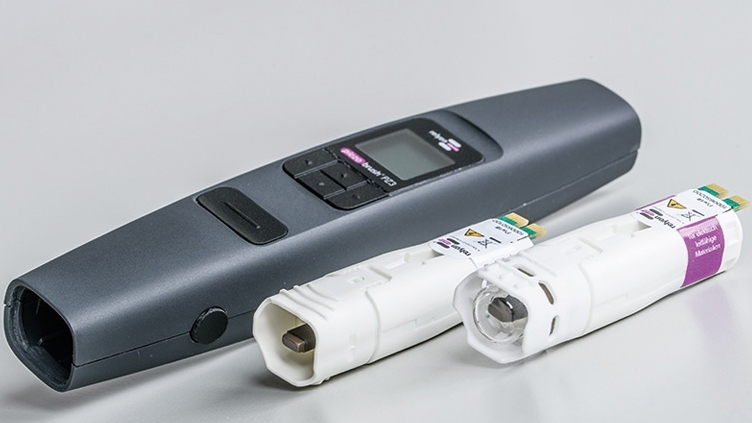Relyon plasma from Regensburg, a subsidiary of TDK Electronics, presents the world's smallest and highly effective handheld plasma device piezobrush® PZ3 with PDD® technology. It enables the simple, efficient and mobile use of cold atmospheric pressure plasma for the surface treatment of plastics, metals and natural materials.
The plasma treatment activates, functionalizes and cleans surfaces. This significantly improves the quality of downstream processes such as bonding, printing, painting or coating.
The piezobrush® PZ3 is a compact handheld plasma device for simple and mobile use in laboratories, pre-development and the assembly of small series. With a maximum power consumption of 18 W, cold-active plasma with a temperature of less than 50 °C is generated using Piezoelectric Direct Discharge (PDD®) technology. The use of plasma has a positive effect on the surface properties of materials that are of great importance for processing and end use. At the heart of the piezobrush® PZ3 is the TDK CeraPlas™ plasma generator, a high-voltage discharge component for plasma generation. This transforms a low input voltage in such a way that very high electric field strengths are built up, which dissociate and ionize the surrounding air. Only the compact design of PDD® technology makes it possible to integrate atmospheric pressure plasma into such a hand-held device.
In principle, all materials can be treated with atmospheric pressure plasma from the piezobrush® PZ3, as hardly any temperature is applied to the material during surface treatment with atmospheric pressure plasma. This virtually eliminates the risk of overtreating materials such as plastics. However, different surfaces must be activated with the appropriate accessories in order to achieve a good result. Two modules are currently available for the piezobrush® PZ3. Non-conductive materials such as plastics, glass, ceramics or natural materials such as natural fibers, textiles and leather react very well to plasma treatment with the "Standard" module. The "Nearfield" module, on the other hand, is designed for the treatment of conductive materials such as metals, CFRP, indium tin oxide (ITO) or conductive plastics. The increased maximum output compared to the previous model enables a treatment speed of 5 cm2/s and a treatment width of up to 29 mm. Even materials that are very difficult to treat, such as high-density polyethylene (HDPE), achieve a surface energy of 72 mN/m after plasma treatment. In contrast to the predecessor model piezobrush® PZ2, the piezobrush® PZ3 also has an integrated plasma treatment process control. The device is equipped with various functions, such as a stopwatch for measuring the time, a countdown function for setting the time with automatic switch-off function or a power setting for adjusting the plasma power. Control is quick and easy via the integrated display.
piezobrush® PZ3 offers many application possibilities. The device has been available on the market since May 2020. To test and validate individual processes and applications, there is the option of sampling in the relyon plasma application laboratory. In addition, relyon plasma offers a loan of the plasma handheld device so that it can be directly integrated into the respective process and tested.
relyon plasma GmbH, www.relyon-plasma.com


